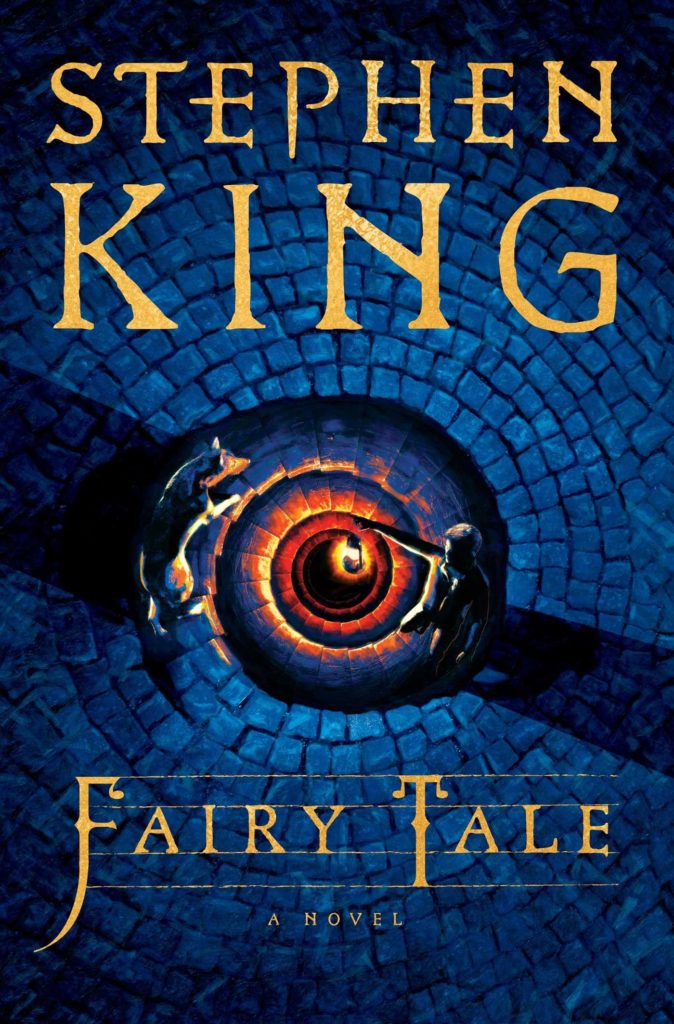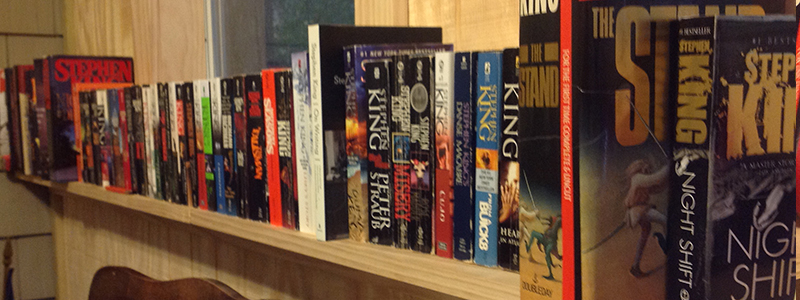The plan is to reread all of Stephen King’s works in the order that they were published. Richard Chizmar of Cemetery Dance had the vision. I’m doing it because I am a writer and I want to improve my fiction. And I love Stephen King’s stories. I think there is something to be learned through this process.
You can also go back to the beginning and read Before Carrie or any of my other posts up through this one and beyond by checking out this link to the Master List of all my #StephenKingRevisited posts.
If you are interested in my ongoing project with #BrianKeeneRevisited, you can check out that Master List as well.

If you scan social media about the reactions to Stephen King’s Fairy Tale, you will see the near universal approval of the work. I don’t remember the last time a Stephen King work has gotten that level of reaction, even among Stephen King fans. This novel is clearly something special.
The book is dedicated to “Thinking of REH, ERB, and, of course, HPL.” I believe this refers to Robert E Howard, famous for the Conan stories which get a nod in this novel through on of the characters introduced part way through, Edgar Rice Burroughs, famous for Tarzan, John Carter, and more, including a number of stories involving an ordinary man being pulled from our world into a world of sci fi or fantasy wonder, and finally, H.P. Lovecraft, who captured King’s imagination at a very young age and from where the biggest bads in the novel draw their inspiration.
The novel has a cool opening. The narrator debates where to start the story/ confession, which provides some cover for an early start before getting to the magic elements. We also get an offhanded preview outline of what is to come from the narrator’s asides.
The history of the bridge to the history of the convenience store fried chicken is well written. It all fit and kept my attention. King found a way to make insurance interesting.
I think for Stephen King the most awful and ordinary way to die is to be hit by a truck as a pedestrian. Since his van accident near his home, this image has appeared in one form or another in several of his works.
Our main character makes a promise to God which drives his choices going forward through the rest of the story. We have a strong character in a bad spot. He’s always trying to pay back God, which is a formula for all manner of miseries.
“There’s such thing as a good friend who’s also a bad friend.” This is a key to the main character’s past mistakes that he’s always trying to atone for. It is also a source of dark power for him when he needs to be the “dark prince” in order to survive.
Recovery is an important component of the story as well. A.A. culture and speak looms large in the novel. Not as heavily as in Dr. Sleep, but it is still there and significant to the processing of the world. The long road to recovery and the “certainty” of addiction. Like with the accident, King is drawing heavily on his own trauma here again.
Radar is, of course, a great character in the book. When referring to a scary dog, the characters make a reference to the movie Cujo. King’s characters are so iconic that he is forced to reference himself in certain spaces because it would be weird if he substituted anything besides Cujo when discussing a scary dog.
I’m reminded of the short story “Cookie Jar” when we talk about passages to other worlds and King calls back to the cookie jars often in the house.
“I was 17. Most exciting thing that has happened to me. By far. I wanted to chase it.” King gave his characters strong motivations for their choices. Some of his best work on that front.
A character we don’t meet yet is spoken of like he might be around any corner.
Only the end was terrible – a very King line of foreshadowing.
“I totally understand why women get pissed off.” King is doing much better with his portrayal of female characters, people of color, and LGBTQ characters. His evolution on writing these types of characters probably deserves its own article.
This is where your disbelief begins. Great line.
The lightheaded and insubstantial feeling of passing through the tunnel reminds me of 11/22/63. Instructions from a dead friend over a tape recorder too.
Something Wicked This Way Comes is heavily referenced as the character tries to make sense of his experiences. Game of Thrones Dire Wolves are mentioned. Ray Bradbury as well.
TELL him. Internal dialogue always has a lot of potential. But this demanding burst from inside the main character’s head is so powerful for his conflicting motivations and has so much meaning conveyed through two words. “Help her.” Again, brilliantly executed for the same power level as “Tell him.” Not quite a prayer “Please, please.” Brilliant work by a masterful storyteller.
Funny meta-cognitive/ meta-story moment: The author might invent a way.
The rules in the second half of the novel seem to resemble the world of the Talisman and Black House.
Charlie is perfectly suited to his role. He’s still a kid, but athletic. His background sets him up to fulfill a quest. “In dark times, good people shine brightest.”
“In stories like the one I had entered, there is often a name that must not be spoken.” Establishing PTSD in a fairy tale story was well done.
He invokes Lovecraft to describe certain streets, but the architecture reminds me of Derry.
The stations of the journey travelling between nights where danger lurks were all done well and served to move the story.
The story has the perfect balance between victories and setbacks. One victory is robbed by a bigger defeat, which leads to a greater victory, which comes at a higher price, and so on. Every moment in the story has a deeper meaning or payoff later. There is no wasted or throwaway scene or detail in the book. They all come back around to serve the reader later either directly or as a metaphor.
A Conan-like figure comes along at just the right moment to produce the highest level of threat.
“There’s always a reason for love, but hate just sometimes is. A free floating evil.” Great line.
I hate heights. King really put me through the wringer on that one during the final stretch of the novel.
There is something worse than Cthulhu waiting yet one or two worlds deeper. The sort of thing that could really threaten a happy ending. King sometimes struggles with endings, but this novel wraps up nicely.
Several people have mentioned that this book would go in their top ten list of Stephen King novels. That’s a hell of a statement on the book. I think after reading every one of his releases up through this one, it is time for me to release my top ten list. So, here goes:
1. 11/22/63 – There are several King novels I’m happy to read multiple times. This one holds almost all its power in the first reading. Based on that first time reading experience, I place this as his best work.
2. The Green Mile – This is a very close second. This may be the closest he has come to writing a perfect novel.
3. The Stand – This is actually my favorite novel and the one I have read the most times. It has the best lines by quantity and power. Every time I read it, I wish it was longer.
4. Fairy Tale – This novel was very good. I kept waiting for something to go wrong, to diminish its power, but the quality held strong all the way through.
5. It – This was the first Stephen King and the first horror book I ever read. Over the years, I started to think it was not as good as I remembered. Upon rereading it, it was better than I remembered.
6. Joyland – This is a hidden gem in Stephen King’s catalog. It benefits from being short. Characters, setting, tone, etc. are all perfect for the story.
7. Mr. Mercedes – The whole trilogy plus is good. The characters are the biggest strength of this book, but the action is amazing too.
8. Billy Summers – This one didn’t wow me in the same way Fairy Tale did. Enough people didn’t like it that I started questioning myself. Upon reflection, despite its flaws, I think it still deserves a spot in the top ten.
9. Revival – This book ties together divergent themes better than anything he has written, maybe aside from Fairy Tale. Faith healers, carnival side shows, rock stars, electricity, science, magic, the afterlife, and the Frankenstein story. It all comes together. This also has the wildest cosmic dark ended of most any book he has ever written.
10. The Girl Who Loved Tom Gordon – There are plenty of books not on this list that I love more than some of these. In picking the best, I focused on which were objectively the best-written stories, as objective as I could be. This book benefits from being short. It was a direct and focused story line. There was enough left to the imagination that the reader must decide the true nature of the pursuing threat.
My next post in this series will depend on what he publishes next, but it will be found on the Master List of all my Stephen King Revisited posts.






I really enjoyed this book for the first 200 plus pages and when Charlie finally got to Empis, it lost me for a bit. I think I was having a hard time getting used to the way the characters talked. All the “nah nahs” and stuff like that. But by the end King really had me hooked on the world and its history and I wanted to know if good would prevail over evil. So the middle of the book was kind of mixed bag for me at times, but the beginning was so intriguing and the end was so heart-racing that I enjoyed it as a whole before it was done.